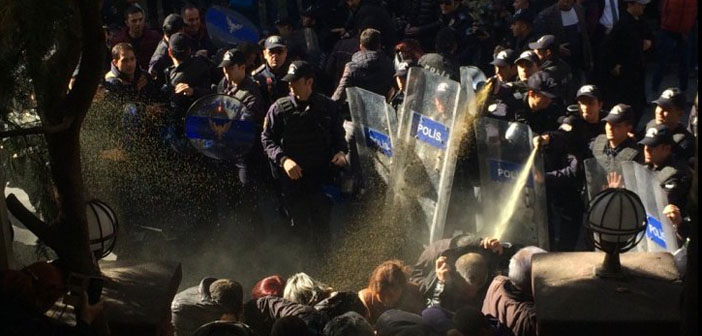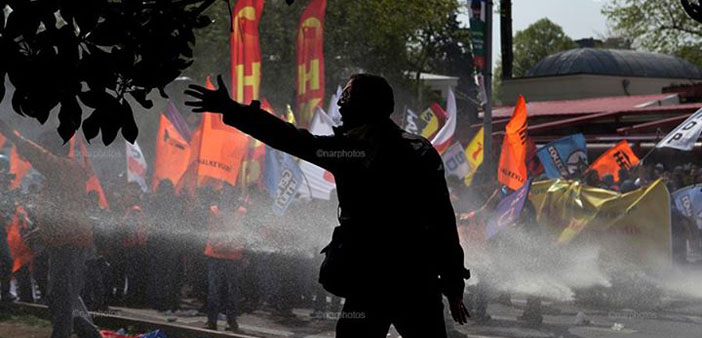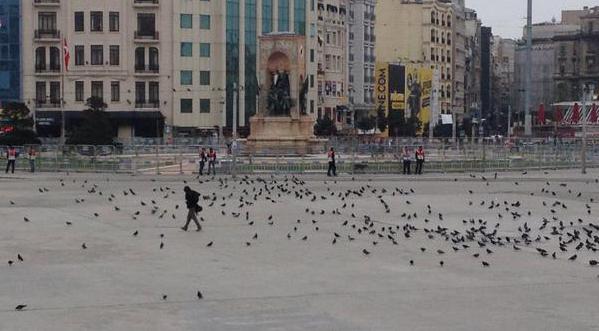Police violence once again arrives on the silver screen with the documentary ‘Article 16: Right to Life’. Co-director Yılmaz Kılıç says, “We did not shoot this documentary, it’s all the work of the police. All we did was to transmit their work.”
In the event that the police faces resistance while doing its duty, it is authorized to use force in order and proportion to break the resistance.
Within the scope of the authorization to use violence, the police may use, according to the nature and degree of resistance, and in a manner that will neutralize those who resist, at a gradually increasing rate, physical force, material force, and if and when legal requirements are met, a firearm.
Law on the Powers and Duties of the Police, from Article 16
Co-directed by Veysel Kerem Hum and Yılmaz Kılıç, the documentary ‘Article 16: Right to Life’ was screened last week within the scope of the Documentarist documentary film festival. The documentary traces the stories of individuals who lost their lives as a result of police shootings, and presents an overview of the struggle for the right to life, which in Turkey often ends up taking a turn onto dead-end-streets.
The documentary mainly revolves around cleaning worker Muharrem Dalsüren, who lost an eye when he was hit by a gas canister shot by the police in front of the municipality building in Ankara during the Gezi resistance, and his efforts to get together with victims like himself, and find legal support. Along the way, the film also pays visits to the struggles for justice of the families of Baran Tursun, who was shot and murdered by the police in İzmir in 2007 for failing to comply with a police officer’s warning to stop; Ethem Sarısülük, who was shot and murdered by a police officer during the first days of the Gezi resistance; Uğur Kaymaz, who was murdered in 2004 by Special Forces at the age of 12; Çayan Birben, who died as a result of intense gas sprayed by police from close distance in Yalova in 2012; Sinan Özkılınç, a police officer who died on duty under suspicious circumstances in 2010; and the struggle of the Saturday Mothers.
We spoke to co-director Yılmaz Kılıç about the documentary.
How did the idea come about to make ‘Article 16: Right to Life’?
In 2013, there was a campaign organized by Mazlumder (Association for Human Rights and Solidarity for the Oppressed) and the Baran Tursun Foundation for Article 16 of the Law on the Powers and Duties of the Police (LPDP) to be changed. We decided to gather documentation on the families of the victims within the scope of that campaign. While the meetings continued, the Gezi resistance broke out. In fact, we had also spoken to Ethem Sarısülük, he was interested in theatre and he had ideas about the documentary. However, he also became a victim of police violence and we had to include his story in the film as well. Some people met police violence for the first time during the Gezi resistance. As we considered including them, we met Muharrem Dalsüren. He was trying to find a precedent case to support his own. So we tried to film Muharrem Dalsüren’s search for justice.
In the documentary, the journey that begins with Muharrem Dalsüren, continues with Çayan Birben.
The pain is the same pain, and they also share the same murderer. Only the names of the victims are different. As we continued to look for a precedent case, we came across the Çayan Birben case, in which the gas canister that caused death had been treated as a murder weapon. He was subjected to a sudden and intense amount of gas, he had asthma, and this caused his death. In Rize, the local court treated the gas canister as a firearm, and the case was sent to a High Criminal Court. However, the High Criminal Court refused to consider the gas canister as a firearm, and sent the case back to the lower court. When we met the family, we found out that a proceeding had still not taken place.
What kind of reactions have you had at the screenings?
There were people in the audience who knew such issues well, but then again there were some who had never experienced police violence. The majority were people one would describe as apolitical, and who had met police violence for the first time during the Gezi resistance. In the documentary, we tried to see the common threads in the pain. There were also common traits in the perpetrators’ actions. The statements of the police officer who murdered a person in Erzurum, and another who murdered a person in Rize were exactly the same: “I issued a warning for him to stop, I then issued a 2nd warning, then I fired a round into the air in accordance with LPDP Article 16, when he still didn’t stop, I fired at him in order to injure.” Emrah Barlak, who was murdered in İzmir by the police, had 13 bullet wounds in his body. The police officer that murdered him also gave the same statement.
Have you encountered any attempts at censorship during the screenings of the documentary so far?
No. But don’t forget this: In the past, the concept of police violence was taboo in Turkey, you couldn’t even ask a police officer to show identity. People who hadn’t experienced police violence used to say; ‘You must have done something wrong for the police to hit you’. But this changed after the Gezi resistance. Our next goal is to screen this documentary at Police Academies.
How do you plan to do that?
We did not shoot this documentary; it’s all the work of the police. All we did was to transmit their work. We will make an application to the Police Academy for this documentary to be screened as part of their training. We are not enemies of the police in the personal sense. We are against the system that makes them become like this, and the Academy that says, ‘even if you kill, you will not receive a sentence’. We cannot fight its servants; we have to fight the system itself. We would love it if hundreds of police watched this documentary and showered us with questions, and criticized us.





